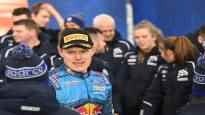What topics did the second round of the World Rally Championship season leave behind? Listen to Urheilu’s rally expert Henri Haapamäki’s analysis below!
“M-Sport’s victory is good for the Rally World Series!”
Here’s a phrase that has reared its head again in various forms after returning to M-Sport Ott Tänak took his first victory in the ranks of the British team since the 2017 season.
I myself have fallen into a similar glow. This is what happened a year ago when Sebastien Loeb won the first race of the Rally1 era in Monte Carlo with M-Sport.
You can talk about depression when you think more closely about what the sentence actually contains.
What does it say about the World Rally Championship that both the media and competing teams are satisfied if a certain team is successful?
For example, Toyota’s team boss Jari-Matti Latvala has often talked about how important it is for all teams to get along.
It would be very special if, for example, Red Bull’s team manager in the F1 series Christian Horner and the number one boss of Mercedes Toto Wolff would be overtly pleased when McLaren or one of the other teams in the challenger position won the race right under their noses.
For example, in Latvala’s speeches, the reason is not Latvala or other people in the sport – the Finn has a reason to hope that the competition in the World Series would remain tight, so that no team would leave the series due to lack of success. The series cannot afford this.
On the other hand, this wish for steady success indicates artificial respiration. There are only two real factory teams in the World Series competing for the teams’ championship: Toyota and Hyundai.
Tänak and M-Sport are trying by all means to make trouble on the drivers’ side, but the fact that the success of the private team is particularly happy tells the essential about the possibilities.
To win, Tänak needed skill, but also handicap
The World Rally Championship in Sweden was exactly the race where Tänak and M-Sport had to succeed. The factory teams develop more during the season than the private team, even though M-Sport is able to offer Tänak more test days than the competitors. The lead of the others is smaller than at the beginning of the season and the snow rally is one of Tänak’s favorites.
Still, the Estonian had to work hard to win. Tänak was not even among the top three drivers in the base time statistics of the rally. He bridged the M-Sport performance gap with his wrists and experience in a masterful way.
However, Tänak benefited the most from the fact that the organizers of the World Rally Sweden unreasonably increased the World Series’ artificial handicapping system – that is, a system where the top driver of the World Series clears the way for others on the first day of racing.
There is nothing wrong with the rule itself, as the individual rallies remain more even this way. The rule also emphasizes the great masters like Sebastien Ogier’s and lastly Kalle Rovanperän performance value: they are able to win despite the handicapping system.
In Sweden, however, Rovanperä didn’t even get a chance to win. Brattby’s speed sky, which was run twice on Friday, was already known to be in poor condition well in advance. Still, the organizers of the Swedish rally decided to make it a part of the historic rally outside the World Championship.
In the last race on Friday, Rovanperä had to clean up drivers unsuitable for Rally1 cars in a rough way. The Finn lost a total of more than half a minute to the top in Brattby’s driving times.
In the video below, you can see how restlessly Kalle Rovanperä’s car behaved in Brattby.
The difference between the Finn and Tänak at the rally finish was 25 seconds. So he lost the rally of more than 300 special test kilometers in practice by a good 20 kilometers. Of course, Rovanperä would not necessarily have won the race, because that too Thierry Neuville suffered at the same time from its starting position as the second car.
What is certain, however, is that Rovanperä didn’t even get a chance to win.
From a sporting point of view, the Swedish World Cup Rally was an extreme example of how artificially the royalty of the sport has to be artificially breathed in order to keep it seemingly even.
The criticism should not be misunderstood: the reason for the unfairness of the handicapping system is that the margins between the top drivers are vanishingly small these days. Even the best driver in the series can’t catch such a handicap.
If the vitality of the World Rally Championship is to be guaranteed, it requires action from the umbrella organization FIA, the promoter of the series and the current car manufacturers of the series. Simply hoping for the success of all teams or artificially giving equalization will not save the series.
The series, which is built on a stable foundation in terms of sport, needs more competition – that is, more teams and drivers. Then the departure of one team due to lack of success would not threaten the entire series.
All the necessary actions must be taken around the World Championship so that new car manufacturers are interested in the rally.
So what are the ways to improve the vitality of the World Rally Championship? The matter was discussed during the rally season on Radio Suomen Urheiluhullui.
You can participate in the discussion on the topic until Monday evening, February 13. until 11 p.m. A ID is required to write a comment.
